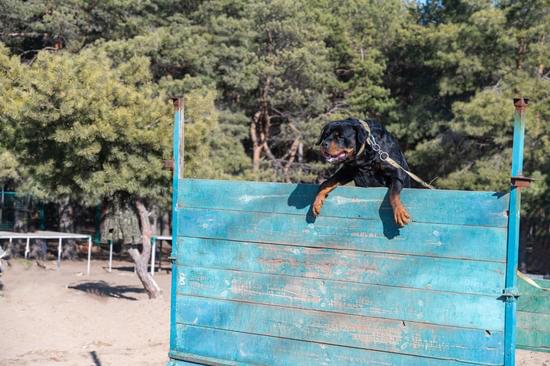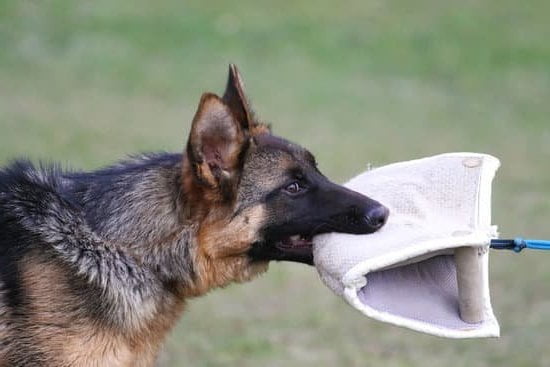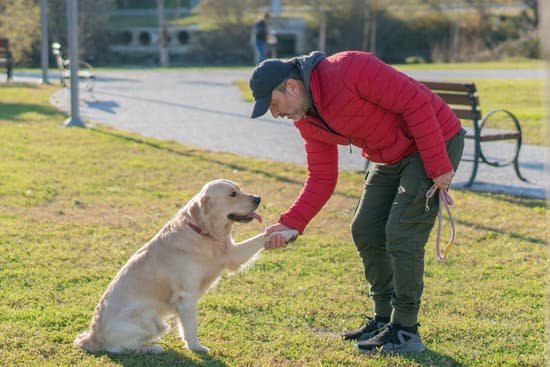If you have a working dog, you may be wondering how to train them to be the best companion and assistant they can be. Training your working dog is essential for their well-being, safety, and productivity. From basic obedience commands to specialized skills for specific tasks, training your working dog is a crucial aspect of responsible pet ownership. Understanding the unique needs of working dogs and setting clear training goals are just the beginning of a rewarding training journey.
One of the first steps in training your working dog is understanding the benefits of investing time and effort into their development. Whether it’s for activities like herding, guarding, or search and rescue, a well-trained working dog can be an invaluable asset. The bond between you and your furry companion will also grow stronger through the training process, leading to a more fulfilling relationship.
In this article, we will explore the various aspects of training a working dog, from understanding breed-specific needs to troubleshooting common challenges that may arise during the training process. By setting clear goals and consistently reinforcing their training, you can help your working dog reach their full potential. Let’s dive into the essentials of how to train your working dog for a successful partnership and productive work together.
Understanding the Breed-Specific Needs of Working Dogs
Working dogs come in a variety of breeds, each with their own unique characteristics and needs. It is crucial for dog owners to understand the specific requirements of their working dog’s breed in order to provide appropriate training and care.
For example, Border Collies are known for their high intelligence and energy levels, making mental stimulation and physical exercise essential for their well-being. On the other hand, German Shepherds are prized for their loyalty and protective nature, requiring early socialization and specialized training to ensure they can fulfill their potential as guard or protection dogs.
One key aspect of understanding breed-specific needs is acknowledging that certain breeds have been selected and bred over centuries for various tasks such as herding, guarding, or hunting. As a result, these working dogs often possess ingrained instincts that may manifest as behaviors such as chasing, digging, or barking. Recognizing these inherent traits can help owners tailor their training approach to address these natural tendencies while also nurturing the dog’s strengths.
In addition to considering a working dog’s genetic predispositions, it is important to acknowledge the individual personality and temperament of each dog within a specific breed. While general breed characteristics provide a useful starting point for understanding a working dog’s needs, it is equally vital to recognize that not all dogs within a breed will exhibit identical behaviors or respond in the same way to training techniques.
By taking into account both breed-specific traits and the unique qualities of each working dog, owners can develop an effective training plan that caters to their pet’s specific requirements.
| Needs | Examples |
|---|---|
| Mental stimulation | Border Collies require challenging activities |
| Socialization | German Shepherds need early socialization for guard duties |
| Instincts | Harnessing innate skills such as herding or hunting in specific breeds |
Setting Clear Training Goals and Objectives
Before you begin training your working dog, it is essential to establish clear goals and objectives. This will provide a roadmap for the training process and help track progress along the way. Whether you are training a herding dog, a service dog, or a search and rescue dog, understanding the specific tasks and skills required for their job is crucial in setting clear training goals.
When setting training goals and objectives for your working dog, consider the breed-specific needs and traits of your dog. For example, herding dogs may require specialized commands and obedience skills, while service dogs need to be trained to perform specific tasks according to their handler’s needs. By tailoring the training goals to fit the unique needs of your working dog, you can ensure that they are well-prepared for their role.
It is important to break down larger training objectives into smaller, achievable tasks. This not only makes the training process more manageable but also allows you to celebrate small victories along the way. Additionally, establishing clear criteria for success will help you evaluate whether your working dog has achieved each objective before moving on to more advanced training.
| Training Goals | Breed-Specific Needs |
|---|---|
| Specialized commands and obedience skills | Herding dogs |
| Performing specific tasks based on handler’s needs | Service dogs |
Basic Obedience Training Techniques for Working Dogs
Training your working dog in obedience is crucial for their safety and the success of their tasks. Here are some basic obedience training techniques to help you achieve this:
- Use positive reinforcement: Working dogs respond well to positive reinforcement, such as treats, praise, and playtime. When they exhibit good behavior, reward them immediately to reinforce it.
- Start with the basics: Begin with teaching your working dog simple commands like sit, stay, come, and heel. These commands will form the foundation for more advanced training.
- Be consistent: Consistency is key in obedience training. Use the same commands and gestures every time, and ensure that everyone interacting with the dog is on the same page to avoid confusion.
Training a working dog in obedience takes time and patience. However, by using positive reinforcement, starting with the basics, and maintaining consistency, you can set a solid foundation for your dog’s training journey.
Remember that each dog is different, so be patient and understanding as you work through the process together. With dedication and practice, your working dog will become a well-trained partner in no time.
Specialized Skills and Commands for Working Dogs
Working dogs are often required to perform specialized tasks that are unique to their breed or job. These skills and commands go beyond basic obedience training and are essential for the dog to be able to effectively carry out their duties.
One example of a specialized skill is scent detection, which is often used by search and rescue dogs, police K9 units, and military working dogs. These dogs are trained to use their exceptional sense of smell to locate missing persons, drugs, explosives, or even human remains.
Another important specialized skill for working dogs is agility and athleticism, particularly for breeds that are used in herding or guarding livestock on farms. These dogs require training in tasks such as herding sheep, cattle, or other animals and may need to navigate rough terrain quickly and efficiently. In some cases, they may also need to learn how to safely maneuver through obstacles or barriers in order to protect their herd from predators.
Certain working dogs are also trained in protection work, which involves commands related to apprehension, bite work or personal protection. This type of training requires a high level of obedience and control from the handler as well as the dog. It is crucial that these commands are taught by experienced trainers who understand the specific temperament and behavior of the working dog breed being trained.
In addition to these specific skills, some working dogs may also need to learn non-verbal communication signals such as hand gestures or whistles. For example, sled dogs used in competitive racing events must respond not only to voice commands but also cues given through body language due to the noisy environment during races. Understanding each breed’s individual needs and abilities is key in defining relevant specialized skills and commands for every working dog.
Training Your Working Dog for Specific Jobs or Tasks
Identifying the Job or Task
Before beginning to train your working dog for a specific job or task, it’s important to clearly identify what that job or task will be. Whether it’s herding livestock, tracking scents, search and rescue, or any other work, understanding the requirements of the job will help you tailor your training program to meet those needs.
Specialized Training Techniques
Once you have identified the specific job or task for your working dog, it’s time to implement specialized training techniques. This may include teaching them to respond to certain cues or commands related to their job, exposing them to various environments where they will be working, and introducing them to any equipment they may need to use.
Consistent Practice and Exposure
Consistency is key when training your working dog for specific jobs or tasks. Regular practice and exposure to the job environment will help reinforce their training and ensure they are fully prepared for their responsibilities. Providing opportunities for real-life simulations of the tasks they will be performing can also help prepare them for the actual demands of their work.
By implementing these strategies and maintaining a patient and consistent approach, you can effectively train your working dog for specific jobs or tasks. Remember that every dog is unique, so being attentive to their individual strengths and areas of improvement throughout the training process is crucial in helping them succeed in their designated role.
Troubleshooting Common Training Challenges for Working Dogs
Identifying Common Training Challenges
Working dogs, like any other dogs, can face a variety of training challenges. These challenges can range from basic obedience issues to difficulties in learning specialized tasks. Some common training challenges for working dogs include leash pulling, distraction during training sessions, difficulty with certain commands or tasks, and behavioral issues such as jumping or excessive barking. Identifying the specific challenges that your working dog is facing is the first step towards finding a solution.
Addressing Leash Pulling
Leash pulling is a common issue for working dogs, especially those bred for tasks that require strong pulling instincts, such as sled dogs or herding dogs. To address leash pulling, it’s important to use positive reinforcement techniques to encourage walking without pulling.
This can involve using treats or rewards to reinforce good behavior and redirecting the dog’s attention back to you when they start to pull on the leash. Additionally, using equipment such as no-pull harnesses or head halters can help provide better control while teaching your working dog leash manners.
Dealing With Distractions
Working dogs often need to focus on their tasks in distracting environments. To help your working dog stay focused during training sessions, it’s crucial to gradually introduce distractions while practicing commands or tasks. Start in a quiet environment and gradually add more distractions as your dog becomes more proficient. Additionally, incorporating mental stimulation exercises into your dog’s routine can help improve focus and reduce the impact of distractions during training sessions.
Overall, troubleshooting common training challenges for working dogs requires patience, consistency, and an understanding of breed-specific needs and behaviors. By identifying specific challenges and implementing targeted solutions, you can help your working dog overcome obstacles and become a well-trained and reliable partner in their designated role.
Maintaining and Reinforcing Training for Working Dogs
Training your working dog doesn’t end after the initial training sessions. It is crucial to continually reinforce their training to ensure they retain the skills and commands they have learned. Here are some important ways to maintain and reinforce training for working dogs:
- Regular practice: Just like with any skill, regular practice is essential for ensuring that your working dog retains the training they have received. Schedule daily practice sessions to reinforce basic obedience commands, specialized skills, and job-specific tasks.
- Positive reinforcement: Continue to use positive reinforcement such as treats, toys, or verbal praise to reward your working dog for following commands and completing tasks correctly. This will help them stay motivated and engaged in their training.
- Advanced training: Once your working dog has mastered basic obedience commands, consider enrolling them in advanced training classes or workshops to continue developing their skills. This can include agility training, scent detection work, or specialized job-related tasks.
Consistency is key: Be consistent with your expectations and the way you communicate with your working dog. Use the same cues and commands each time you train or ask them to perform a task. This consistency will help reinforce their training and prevent confusion.
By maintaining and reinforcing your working dog’s training on a regular basis, you can ensure that they remain skilled, attentive, and well-behaved in their professional roles. Remember that ongoing training is just as important as the initial training process.
The Importance of Consistency and Patience in Training Your Working Dog
In conclusion, training your working dog can be a rewarding and beneficial experience for both you and your four-legged companion. By understanding the breed-specific needs of working dogs and setting clear training goals and objectives, you can ensure that your dog is well-prepared for its role as a working animal. Basic obedience training techniques, specialized skills, and commands, as well as job-specific tasks, are all crucial elements to consider when training your working dog.
It’s important to remember that consistency and patience are key components of successful training. It may take time for your working dog to fully grasp new commands or tasks, so it’s essential to remain patient and consistent in your approach. Additionally, troubleshooting common training challenges and maintaining and reinforcing training on a regular basis will help ensure that your working dog continues to excel in its role.
Overall, the bond between a working dog and its handler is strengthened through dedicated training efforts. Training not only helps the dog perform its duties effectively but also fosters a strong sense of teamwork between the animal and its owner. With the right approach, dedication, and understanding of the unique needs of working dogs, you can successfully train your canine companion to fulfill its duties with confidence and skill.
Frequently Asked Questions
What Is the Best Way to Train a Working Dog?
The best way to train a working dog is through consistent and positive reinforcement. Working dogs thrive on structure, repetition, and rewards.
It’s important to establish clear expectations and provide plenty of opportunities for practice and reinforcement. Training should also be tailored to the specific duties the working dog will perform, whether it’s herding, search and rescue, or guarding.
Are Working Dogs Easier to Train?
Working dogs can often be easier to train than other types of dogs because they are bred for specific tasks and have a strong desire to work. They are generally quick learners and eager to please their handlers.
However, every dog is unique, so individual temperament and personality also play a role in how easy or difficult they are to train.
What Commands for a Working Dog Training?
The commands used for working dog training depend on the specific tasks the dog will perform. Common commands include “sit,” “stay,” “come,” “heel,” “fetch,” “leave it,” and more specialized commands based on the duties of the working dog, such as “herd” or “track.” Consistency in command language across all handlers is crucial for effective communication with the working dog.

Welcome to the blog! I am a professional dog trainer and have been working with dogs for many years. In this blog, I will be discussing various topics related to dog training, including tips, tricks, and advice. I hope you find this information helpful and informative. Thanks for reading!





